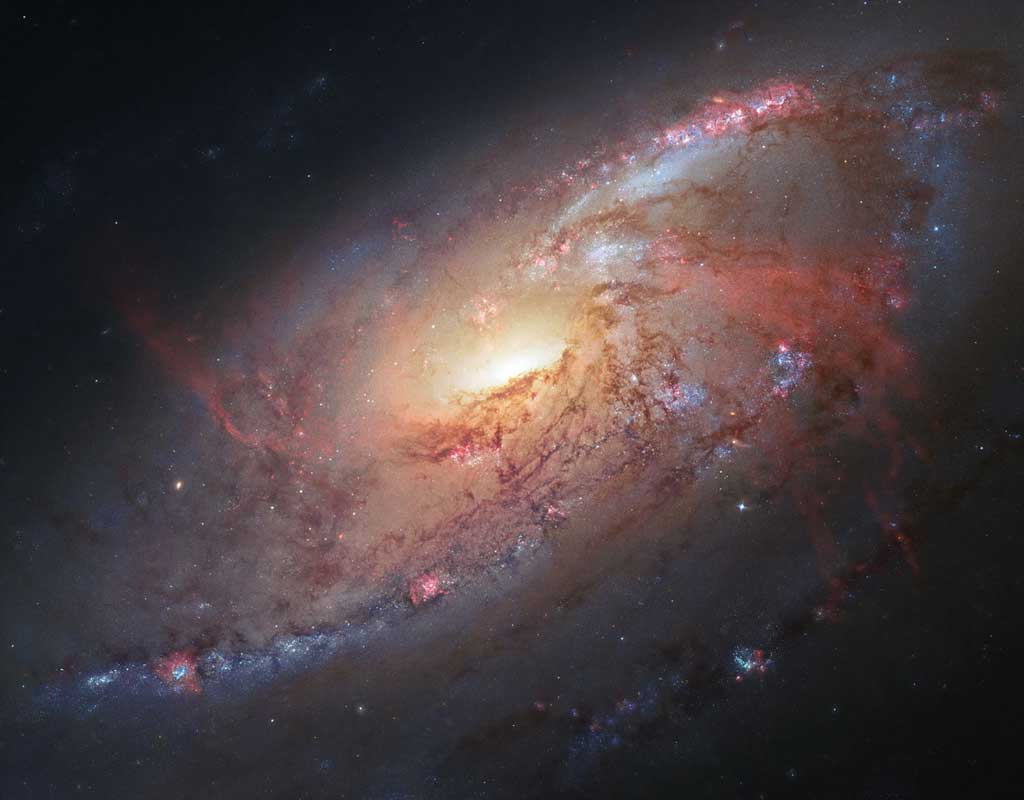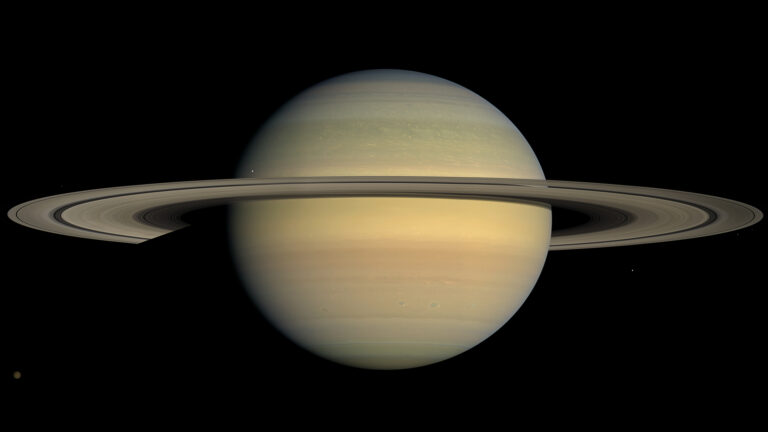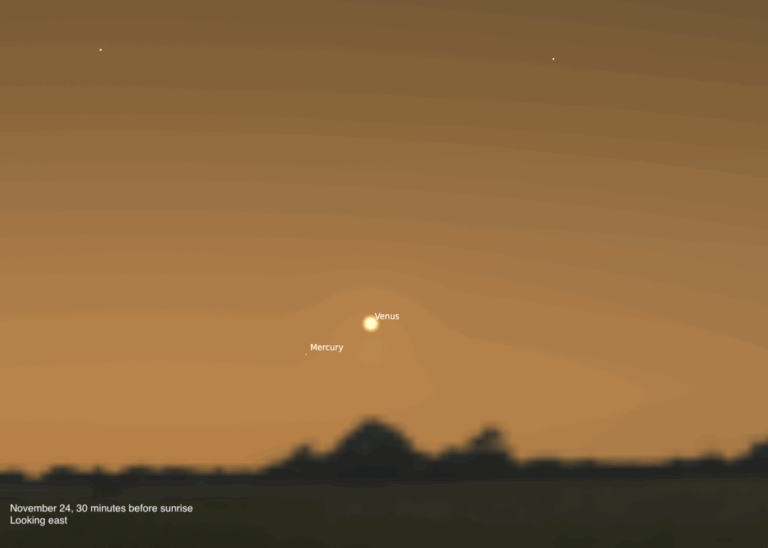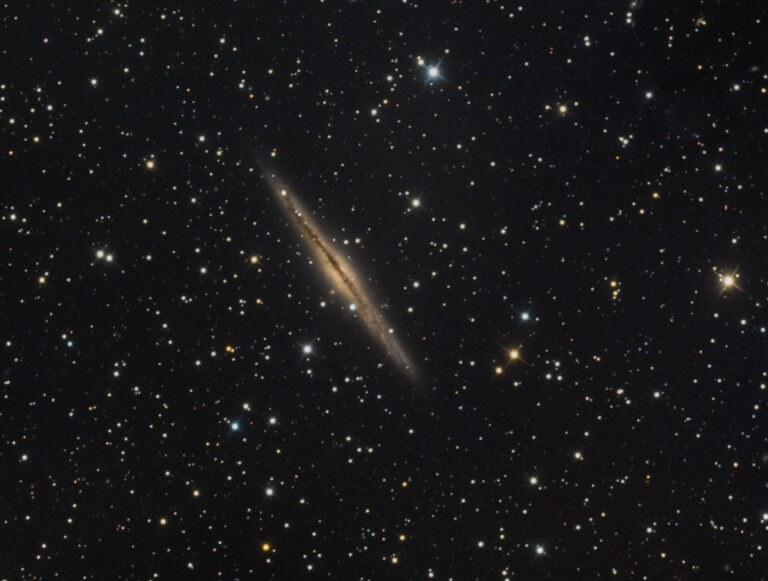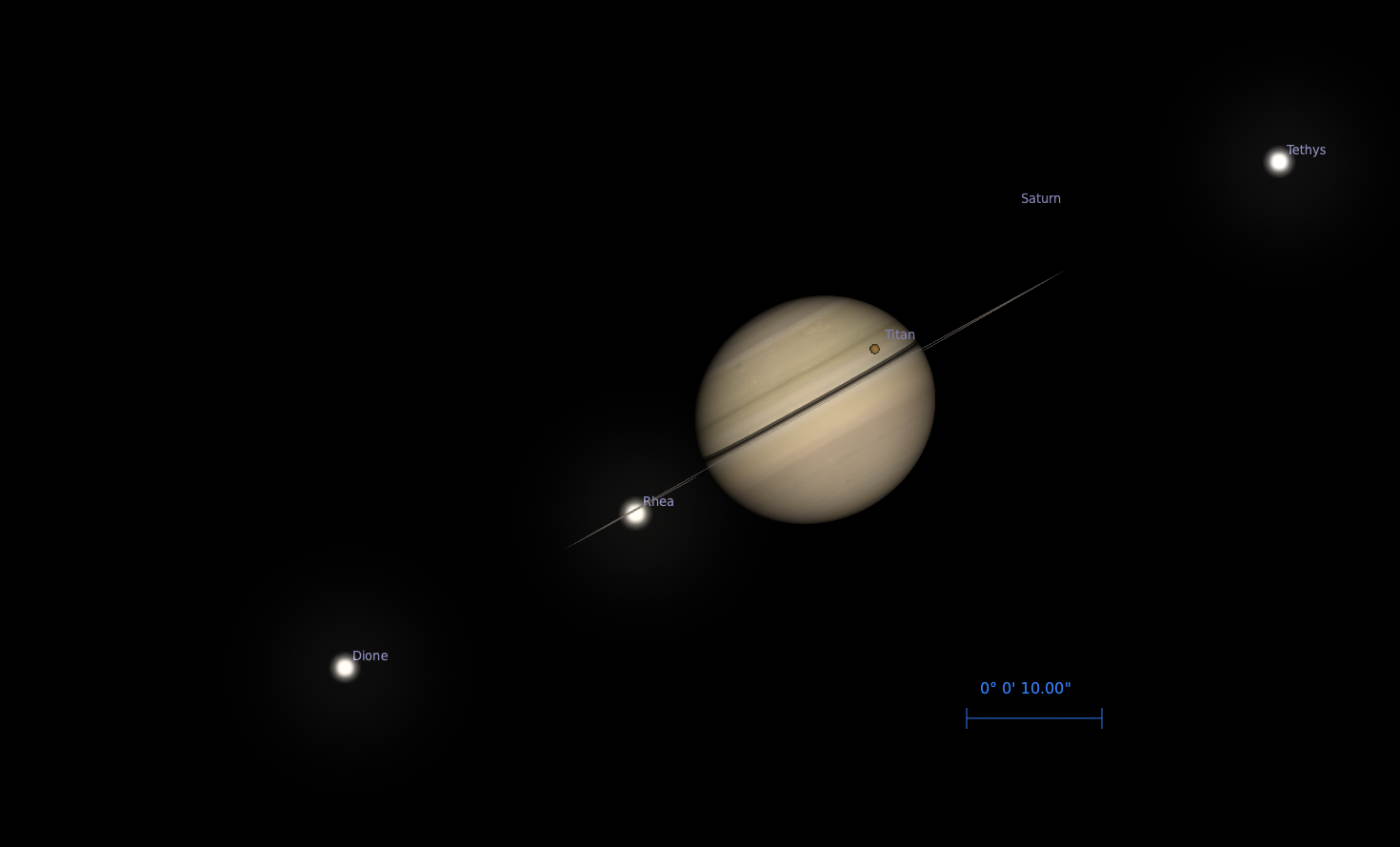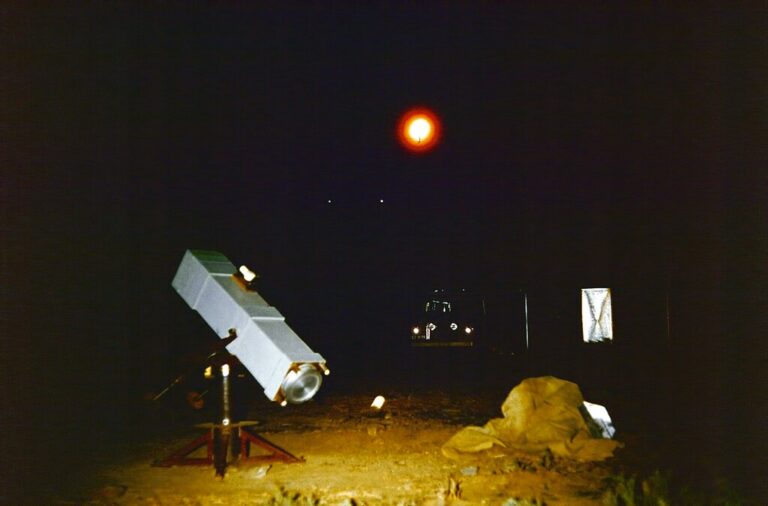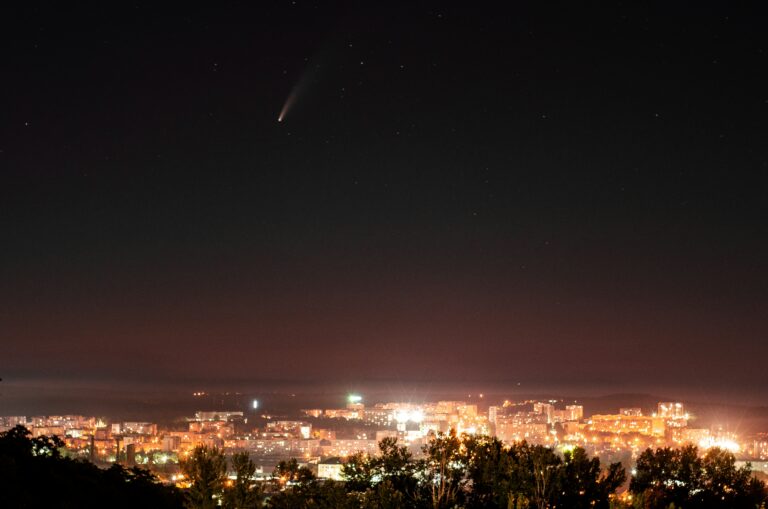Key Takeaways:
If you happened to be up early this morning, you may have seen the Moon and Venus close to each other in the sky. The Moon passed 0.7° north of Venus at 5 A.M. EDT. Prior to that, the Moon also occulted Venus for some regions of the world, although the event was impossible to catch from all but the most northeasterly U.S. regions.
This evening, you can catch Venus’ fellow inferior planet, Mercury, about 8° high in the northwest from 40° north latitude at sunset. It’s sinking quickly, a little less than half that height 30 minutes later. Mercury is magnitude 2.6 and 10 percent lit. Look 33° north-northwest of the planet as the sky starts to darken — the first star to pop out is likely Capella, Auriga’s magnitude 0.1 alpha star. It, too, is setting, just 7° high 30 minutes after sunset. Other bright stars you might see appearing in the sky around this time are Arcturus, high in the southeast, and Vega, high in the east.

Astronomy is pleased to present The Complete Star Atlas, the perfect resource for stargazers of all ages. This practical guide to viewing the night sky is now available, and includes approximately 87,000 stars, 1,200 deep-sky objects, and 24 high-quality star maps. You’ll also find 50 pages of astronomy history, tips, and more from experienced Contributing Editor Michael E. Bakich.
Even in you weren’t able to view yesterday’s occultation of Venus by the Moon, you can still spot the bright planet this morning. About an hour before sunrise, Venus is 2.5° high in the east-northeast and climbing as the sky brightens. It glows at magnitude –4.6; through a telescope, you’ll see it’s a crescent just 9 percent lit. The entire disk spans 51″.
Above Venus in the sky this morning is the Pleiades star cluster (M45), also called the Seven Sisters — although how many of those seven you can make out depends on factors such as your own eyesight and the brightness of the sky (or your viewing site). Without optical aid, most people can easily count six stars in the small, dipper-shaped cluster. Can you see all seven?
The Pleiades is also an excellent object for your binoculars or small scope. Spanning about 110′, the cluster actually contains more than 1,000 members, although most are invisible even with optical aid.
The summer solstice occurs today at 5:44 P.M. EDT, marking the first day of Northern Hemisphere summer.
Sunday, June 21
New Moon occurs at 2:41 A.M. EDT.
An annular solar eclipse can be seen by observers in parts of Africa and southern Asia today. Greatest eclipse will occur near the India-China border, with a 38-second duration and 99 percent coverage. Annular eclipses take place when the Moon completely covers the Sun (as with a total solar eclipse); but sometimes, either the Moon is too close to Earth or Earth is too close to the Sun for the Sun and Moon’s apparent sizes to match up. When that happens, a thin ring of sunlight remains visible even at greatest eclipse.
Slooh will be broadcasting the event live online on YouTube:
Monday, June 22
Look west after sunset to see Leo the Lion’s stately figure headed down toward the horizon as the night progresses. Regulus, Leo’s magnitude 1.4 alpha star, is envisioned as the Lion’s heart. Lying very near the ecliptic plane, this star is often occulted by the Moon. Regulus also marks the base of the handle of the constellation’s Sickle asterism, whose hook is made up of several other bright stars to Regulus’ northwest. At the other end of the constellation, Denebola (Beta [β] Leonis) marks Leo’s tail. This star shines at magnitude 2.1 and is a little over 1.5 times the Sun’s radius.
Within Leo are numerous bright galaxies, including the famous Leo Triplet of NGC 3628, M65, and M66 Each of these three spirals is tilted differently with respect to our line of sight, making each look quite distinct from its companions. You’ll find the group a little over 7° west-southwest of Denebola, and less than 3° south-southeast of magnitude 3.3 Chertan (Theta [θ] Leonis).
Neptune is stationary at 2 P.M. EDT. If you want to spot the solar system’s most distant planet, you’ll have to get up early to do it: Neptune rises just before 1 A.M. local time in the east. Wait 20 minutes or so, and Mars will have cleared the horizon behind it. Both are in Aquarius; give the region an hour or two to climb higher in the sky for the best viewing. Mars is 11″ in apparent size. Its bright magnitude –0.4 light is easy to spot. Neptune, which you’ll need optical aid to see, is just under 6.5° due west of the Red Planet. Its magnitude 7.9, bluish disk is 2″ wide.
Nighttime observers should pull out their telescopes for a deep-sky two-for-one. Comet PanSTARRS (C/2017 T2) passes less than 1° west of the spiral galaxy M106 tonight. The pair are in Canes Venatici, high in the northwestern sky. PanSTARRS is currently around magnitude 9, compared with the magnitude 8.3 galaxy. Both should show up nicely in a medium-size scope. If the seeing is good, bump up the aperture and magnification and spend a while admiring the similarities and differences between the two smudges of light.
Wednesday, June 24
Venus is stationary at 2 P.M. EDT. You can catch it rising before the Sun in the east, with the bright star Aldebaran trailing 5° behind it. See how long you can keep the naked-eye planet in your sights before it’s lost in the brightening dawn.
If evening observing is more your speed, Jupiter rises around 10 P.M. local time, with Saturn following about 10 minutes later. The two giant planets are less than 6° apart. Jupiter glows at magnitude –2.7 in Sagittarius, while Saturn lies just over the constellation’s border in Capricornus and is magnitude 0.3. Tiny, dim Pluto is a scant 50′ to Jupiter’s southwest — you’ll need a telescope and camera to catch it at magnitude 14.6.
To the planets’ west is the plane of the Milky Way; under country skies, you may be able to see our galaxy’s glow. For the best chance to see it, wait until the waxing Moon has set around midnight.
Delphinus the Dolphin swims high through the southern sky this morning in the hours between midnight and sunrise. Made up of five 4th-magnitude stars, Delphinus lies between the much larger constellations of Pegasus and Aquila. Four stars form the Dolphin’s diamond-shaped body, with Gamma [γ] Delphini as his nose, while the fifth (Epsilon [ε] Delphini) marks the end of his tail.
As a bonus, Gamma is actually a double star with a separation of about 9′. It’s easy to split with a modest telescope. The fainter star, Gamma-1, is actually hotter than its brighter companion, Gamma-2. As a result, Gamma-1 often appears white, while Gamma-2 takes on a yellow-orange hue. Gamma-2 is cooler but brighter because it has both a slightly higher mass than Gamma-1 and because it is farther along in its stellar life cycle. No longer fusing hydrogen in its core, Gamma-2 is approaching its giant phase, which has caused it to brighten.
Friday, June 26
Today is the 290th anniversary of Charles Messier’s birth. Messier was a comet hunter responsible for the famous Messier catalog of objects, which he recorded so as not to confuse these stationary fuzzballs with comets. Some are bright and easy to spot, while others typically require a large aperture and/or dark skies. Here is a smattering of Messier objects for you to hunt down tonight. They’re on the brighter side because the waxing Moon won’t set until after midnight.
After sunset, you can find M7, also called Ptolemy’s Cluster, rising in the southeast. This open cluster of stars is about 80′ across; you can find it by locating bright orange Antares, the heart of Scorpius the Scorpion, and scanning about 20° east-southeast.
Much higher in the sky is M11, the Wild Duck Cluster. Located in Scutum, you can also find this large open cluster by swinging about 21° southwest of the bright star Altair in Aquila. (Altair, along with Deneb in Cygnus and Vega in Lyra, makes up the famous Summer Triangle asterism.) M11 contains about 3,000 members; it is the most distant open cluster in Messier’s catalog that can be seen with the naked eye — although that feat likely requires darker skies than you’ll have while the Moon is still up.
As the night progresses, the Andromeda Galaxy (M31) gains altitude in the northeast. While this massive spiral galaxy — the closest large spiral to our own — can be spotted without optical aid under dark skies, you may need binoculars or a telescope to see it tonight. It will appear as an elongated gray fuzz in most binoculars or telescopes. Under high power, you may spot one or two of its nearby satellite galaxies: M110 (to the galaxy’s northwest) or M32 (to its southeast).

Our exclusive Sky Guide 2020 is now available! This free downloadable pamphlet contains a month-by-month rundown of 2020’s biggest celestial events, from Mars’ best opposition in years to the return of totality in South America this December. Check out Astronomy’s Sky Guide 2020 now!


